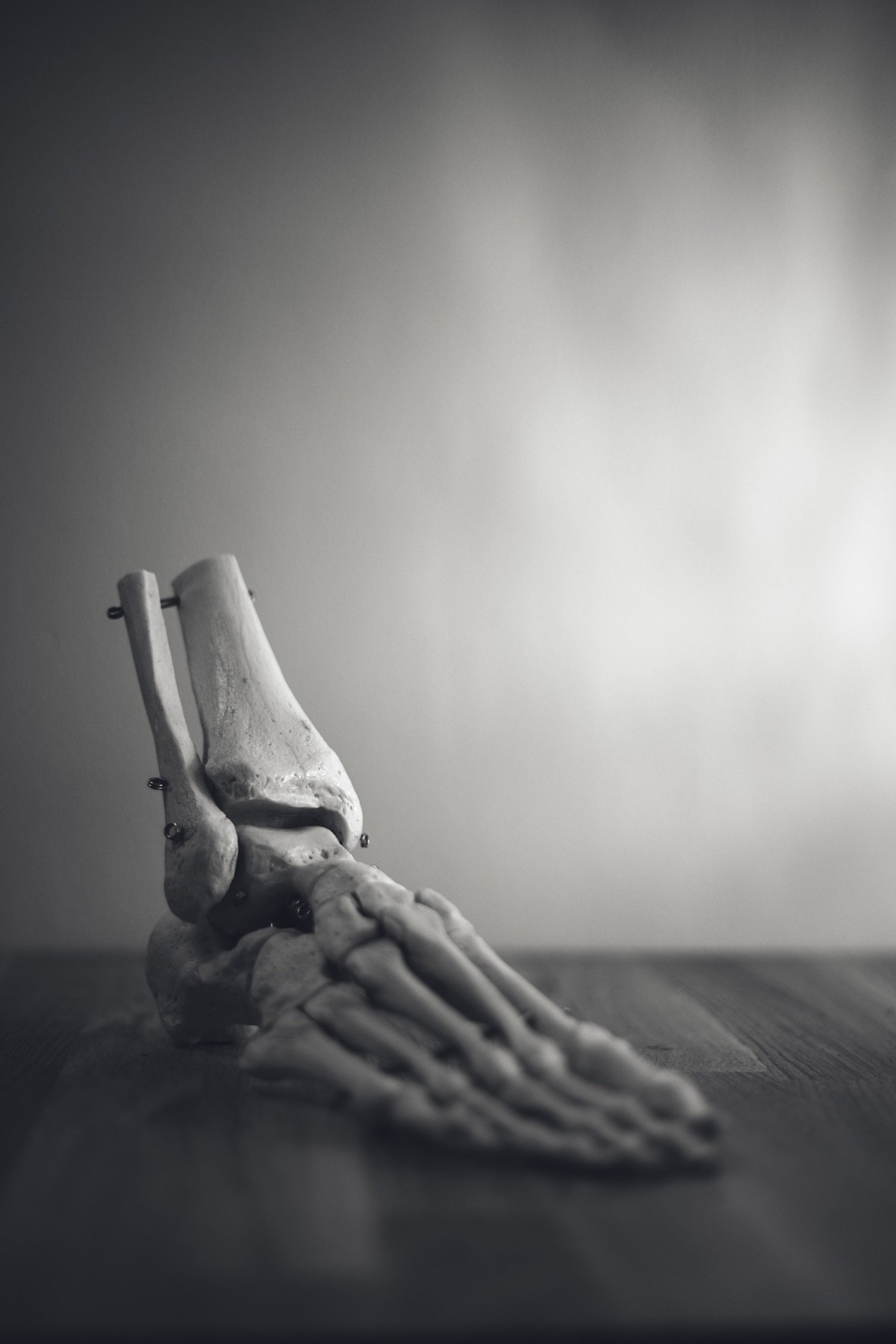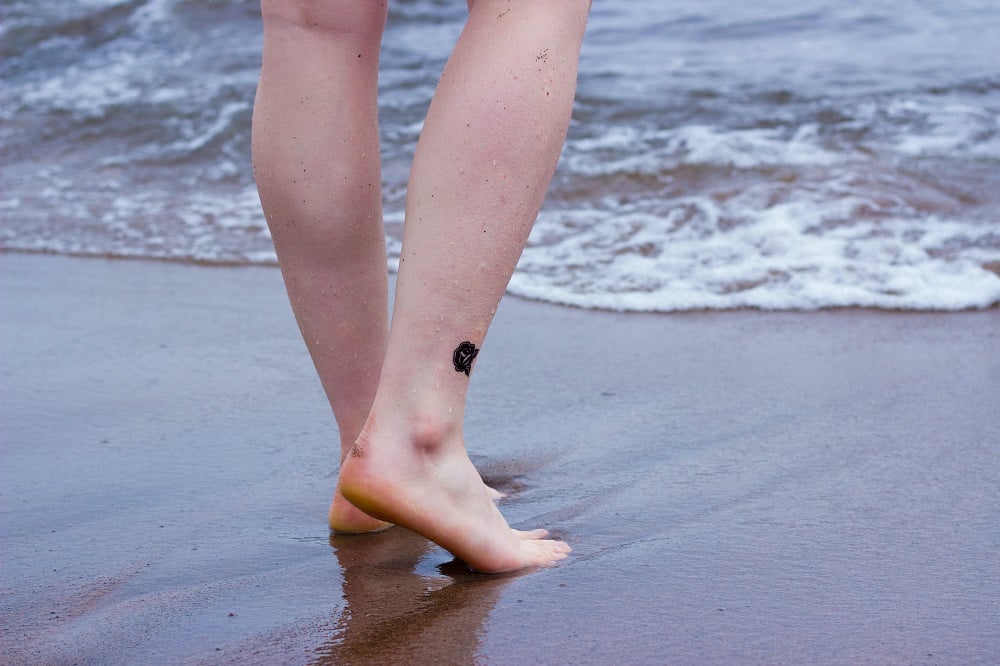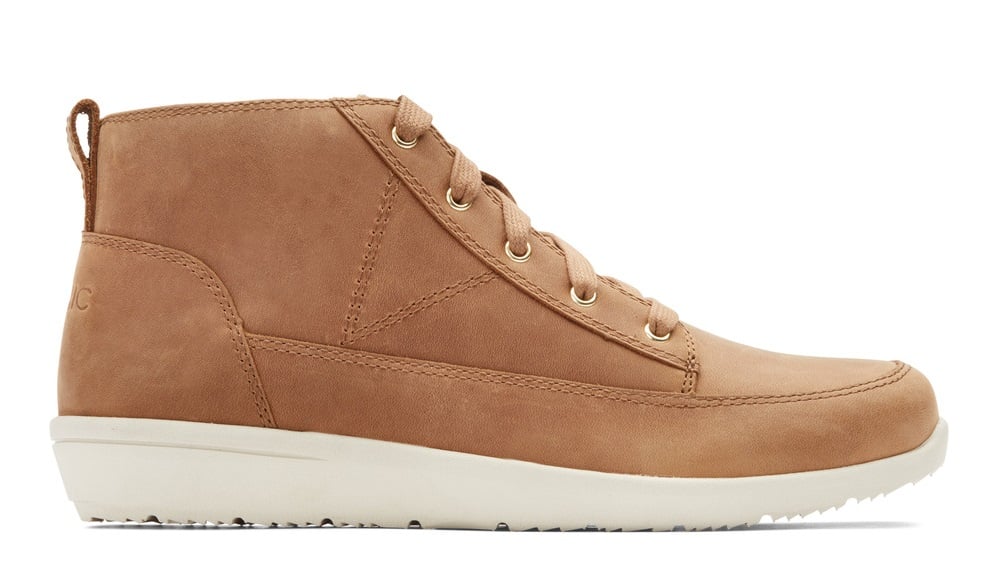
There’s perhaps no greater joy in life than kicking up your feet at the end of a long day. But what happens when your feet are still aching, even after the day is done?
Depending on the anatomy of your feet and the activities you participate in, you may be experiencing something called peroneal tendonitis. This common condition—which causes the swelling, thickening, and enlarging of your peroneal tendons—can manifest as pain and instability in your ankles.
Fear not: you’ll be able to comfortably walk, stroll, and skip again in no time. Lucky for you, peroneal tendonitis is a treatable condition that can easily be prevented by following a few simple steps. Whether you have experienced peroneal tendonitis or not, it’s vital to find supportive shoes for ultimate foot health. Here at Vionic, you’ll be able to find exactly what you need whether that be beach shoes or comfortable sandals.
Ready to put the pep back in your step? Read on to learn more about peroneal tendonitis.
What is Peroneal Tendonitis?
Whether you’re an avid runner, veteran athlete, or simply someone who spends hours a day on their feet, chances are you’ve dealt with foot or ankle pain.
The specific pain you’re experiencing may be a result of a pinched nerve in foot or peroneal tendonitis as we’ll discuss in detail.
The Anatomy of Peroneal Tendonitis
Peroneal tendonitis is typically felt around the back and outside of the foot.
This condition affects the peroneal tendons, which are located on the outside of the ankle. While ligaments connect bone to bone, tendons connect muscle to bone. Tendon injuries may present as inflammation or tiny tears and often result from overuse as tendons wear and tear over time with age or constant activity.1
To get technical, the two peroneal tendons that run along the back of your fibula (calf bone) are:
- The peroneus brevis – The peroneus brevis is the shorter muscle of the two and starts in the low leg, running along the back of the fibula.
- The peroneus longus – The peroneus longus, as the name implies, is the longer muscle, starting higher on the leg and running all the way underneath the foot.
Both tendons act to turn the ankle, a major anatomical undertaking.
Not sure if you’re experiencing peroneal tendonitis? Let’s explore the common root causes and symptoms.
Peroneal Tendonitis Causes + Symptoms
Our feet and ankles do a lot of work for us, so it’s no surprise that sometimes they’ll ask for a break.
You may be suffering from peroneal tendonitis if you start experiencing consistent pain around the back and outside of the ankle, as well as instability of the ankle when bearing weight. There may also be swelling at the back of the ankle and it may be warm to the touch.
Causes of peroneal tendonitis include:
- Improper training or rapid increase in training
- Poorly fitting shoes
- High arches
There may not be a specific injury one can link to this condition—instead, activities like marathon running and other physical endeavors that involve repetitive ankle use can contribute to peroneal tendonitis over time. Plantar fasciitis is also commonly experienced by these activities. Before you get discouraged by wondering if plantar fasciitis goes away or if peroneal tendonitis is something you’ll just have to deal with, read on for some recovery tips.
The best way to determine if you have peroneal tendonitis is to visit your local foot and ankle orthopedic surgeon. They’ll collect your medical history, perform an exam, and likely take an X-ray, ultrasound, or MRI in order to give you a conclusive diagnosis.
Most likely, they’ll ask you if you’ve increased your physical activity lately or if you’ve made any whoopsies in training (i.e. not practicing proper form while running). You may feel pain when they examine your peroneals and you may also have pain when you invert your foot, turning it toward your body.
Once the doctor has completed the exam, they’ll present you with a treatment plan.

Peroneal Tendonitis Treatment
The treatment plan for peroneal tendonitis depends on the severity of the injury and the personal preferences of the patient. Most treatment plans will begin with non-surgical options before the doctor starts outlining the pros and cons of a more aggressive plan of action.
Non-Surgical Treatment Options
The most common advice doctors will give peroneal tendonitis patients? Take it easy. However, folks who suffer from peroneal tendonitis often are extremely active, spending hours a week devoted to running, biking, high-intensity training, and more. It can be difficult to slow down your lifestyle, even when you’re in moderate to severe pain. The best way to start treating peroneal tendonitis, though, is to do just this: slow down, rest, and stay off your feet.
Your orthopedic surgeon may suggest other non-surgical treatment options, too, including:2
- Medication – Anti-inflammatory medication like the humble Ibuprofen can be prescribed to relieve pain and swelling.
- Physical therapy – PTs may use ice, heat, and ultrasound therapy to help ease pain and swelling before moving on to gentle exercises that help strengthen weakened muscles.
- Bracing – It may not be glamorous, but wearing a brace can often help those suffering from peroneal tendonitis to continue to stay on their feet and complete everyday activities.
Your doctor will also discuss how and when you will be able to reintroduce major physical activity back into your life.
You’ll likely need to get a new pair of shoes to support your ankles, and you’ll want to ease slowly into your old routines. You may even need to consider switching up your favorite workout to avoid further or future tendon damage.
Surgical Treatment Options
If you’ve exhausted all non-surgical treatment plan options, you and your doctor may start discussing surgical treatments to address your continued ankle pain. It can be helpful for diagnostic purposes to distinguish between inside ankle pain vs outside ankle pain.
Recovery from these various surgical procedures can take time, often up to six weeks of not bearing any weight on your foot.3 The best way to avoid being laid out for two months? Prevention.
Peroneal Tendonitis Prevention
The best medicine is prevention, and preventing peroneal tendonitis is extremely feasible, even if you are a prolific marathon runner.
Let’s break down four simple ways to help prevent this condition.
#1 Practice Proper Stretching
By regularly practicing proper stretching and strengthening exercises for your calves and feet, you can prevent the normal wear and tear that will negatively affect your tendons over time.
A few stretches to incorporate into your daily routine before and after you exercise include:4
- Towel stretch – Sit on the ground with your legs straight in front of you, wrapping a towel around your toes. Gently pull back until you feel a stretch at the bottom of your foot and back of your lower leg. Hold the stretch for 30 seconds. Repeat up to three times.
- Standing calf stretch – Face a wall with one foot extended in front of you, toes pointing up and against the wall. Slowly lean forward until you feel a slight stretch in the back of your lower leg, hold for 30 seconds and repeat up to three times per foot.
- Standing soleus stretch – Stand facing toward a wall, arms distance away, hips aligned, with your injured leg placed back on a diagonal with your heel on the floor. Your other leg should be forward. Turn your injured foot slightly inward (inversion) as you slightly bend your forward (the uninjured leg) at the knee. Lean into the wall until you feel stretch, hold for 30 seconds and repeat up to three times.
All of these stretches can be done to help strengthen the muscles in your feet and calves, thus reducing the risk of injury. They can also be done post-injury, with a doctor’s approval, to relieve pain and swelling.

#2 Find the Right Shoes for Peroneal Tendonitis
Wearing poorly made or ill-fitting shoes is a recipe for ankle and foot disasters. If you’re constantly on your feet, it’s worth investigating and investing in well-made sneakers (or whatever other kind of shoe you wear most often).
Footwear company Vionic is vetted by the American Podiatric Medical Association and offers specially created Vio-Motion™ footbed technology with three-zone comfort and ultimate arch support.5
Vionic offers not only active footwear, they also have stylish and comfortable flats, heels, sandals, booties, and even slippers, so you can support your feet no matter the occasion.
#3 Increase Athletic Training Gradually
No matter what new exercise you’ve decided to pursue—even if you believe you’re in excellent shape—build up this regimen slowly. It can also be helpful to switch up your workout, incorporating different routines (like swimming, for instance) to give your ankles a break occasionally.
Athletes who have strong muscles and low heart rates are still at risk of injury if they jump into a new activity too quickly, repetitively using their ankles to get them where they want to go.
If you are recovering from peroneal tendonitis, you’ll also want to slowly re-enter an old exercise or gently approach a new activity.
#4 Maintain Some Activity Throughout Recovery
If you’re recovering from peroneal tendonitis and hope to prevent future injuries, you’ll want to still maintain some level of activity throughout your recovery period.
This activity can be as simple as practicing the gentle stretches listed above, or just walking around the block in your new, supportive shoes with excellent arch support. These subtle movements will prevent your peroneals from getting too stiff.
Take the First Step to Prevent Peroneal Tendonitis with Vionic
Foot and ankle pain can really slow you down, especially if you’re someone who enjoys being constantly active, pushing yourself to new heights.
Peroneal tendonitis can affect people with naturally high arches, people who rapidly increase their training regimen, and people who wear poorly fitting shoes. This condition can result in ankle pain and instability, and sometimes can only be remedied with weeks of rest, medication, and physical therapy.
Here at Vionic, we may not be able to adjust your arches or help you wake up for that 4 a.m. 10 miler, but we can certainly make sure your feet are fitted in comfortable, stylish footwear. Vionic’s sleek sneakers are scientifically developed to keep you moving safely, with ample arch support and cushioning.
Recognized by the American Podiatric Medical Association, Vionic is a footwear company that understands just how frustrating foot pain can be. With Vionic, you’ll be able to hit the ground running—in shoes you’re proud to sport.
Sources:
- “Tendon Injury (Tendinopathy)“. University of Michigan Health. .https://www.uofmhealth.org/health-library/uh2113
- William Morrison. “What’s to Know About Peroneal Tendonitis?”. Medical News Today. July 13, 2017, https://www.medicalnewstoday.com/articles/318349
- “What is Peroneal Tendinosis?”. Foot Care MD. https://www.footcaremd.org/conditions-treatments/ankle/peroneal-tendinosis
- Natasha Freutel. “Stretches to Relieve Peroneal Tendonitis”. Healthline. Sept 17, 2018, https://www.healthline.com/health/fitness-exercise/peroneal-tendonitis-stretches
- “Vio-Motion Support”. Vionic Shoes. https://www.vionicshoes.com/vio-motion-support



Leave a Reply